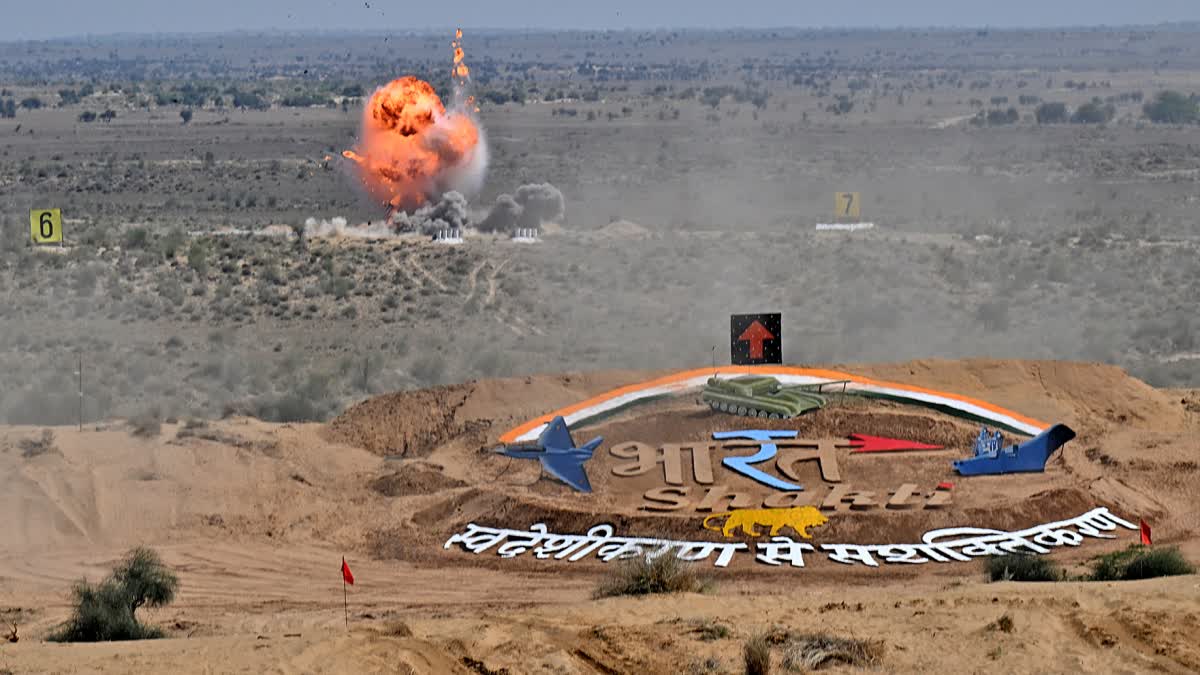Fifty years ago, in the deserts of Pokhran, a seismic event reverberated not only across the sands of Rajasthan but also throughout the corridors of power across the globe. On May 18, 1974, India etched its name in the annals of history as it conducted its first nuclear test, codenamed "Smiling Buddha."
This momentous occasion marked a transformative juncture in India's journey, signifying not just a scientific milestone but a seismic shift in the country's strategic posture. As the dust settled and the world grappled with the implications, the Pokhran test heralded the dawn of a new era, where India's nuclear ambitions would shape regional dynamics and global discourse for decades to come
''If India makes an atomic bomb, Whether we will eat grass or we fast, but We will make a nuclear bomb''.... Pakistan, which announced 9 years ago that India would conduct the tests, has started taking steps in that direction
18 May, 1974
It was the day when our country showed its technological power on the world stage. It was a day that sent a strong message to the neighboring countries that were burning with war fever. Exactly 50 years ago on this day, India conducted its first nuclear test. Thus, it stood proudly against America, the Soviet Union, Britain, France, and China, which showed that power. It was the first time a non-permanent member of the UN Security Council conducted a nuclear test. Some of the superpowers, who were angry about this, were able to get away with sanctions. However, our country has survived, and is continuously advancing in technology.
Why Development Of Nuclear Weapons?
There were strong reasons for India to undertake nuclear testing. China invaded our country in 1962. It occupied the Aksaichin area and tested a nuclear weapon in 1964. The incident worried India as the opponent had already gained an upper hand over us in terms of conventional weapons.
Apart from this, India had another nation in the form of Pakistan to fight with. By 1965, two wars were fought with that country. In such situations, the objective was to protect the national interests by increasing the defense capability against the adversaries. At that point of time, our country came to a definite conclusion that the development of nuclear weapons is a key step to maintain a command in international arena.
In December 1971, during the Indo-Pak war, America sent its aircraft carrier USS Enterprise into the Bay of Bengal to threaten our country. In response to this, the Soviet Union deployed a submarine with nuclear missiles. The American warship withdrew from there. With this development, then-Prime Minister Indira Gandhi became aware of the capability of nuclear weapons and ballistic missiles.
How India's Nuclear Test Began
In 1944, Homi Jahangir Bhabha established the Tata Institute of Fundamental Research (TIFR), and the foundations of India's nuclear program were laid. After independence, then Prime Minister Jawaharlal Nehru gave formal permission for nuclear research.
Under the leadership of Bhabha, steps were gradually taken towards the design of nuclear weapons. This research gained momentum between 1954 and 1959. After Bhabha's death, the nuclear research program was overseen by physicist Raja Ramanna.
After Lal Bahadur Shastri became the Prime Minister, physicist Vikram Sarabhai was appointed as the head of the nuclear program. But Shastri, who was committed to Gandhi's principles, limited this project to peaceful needs.
After Indira Gandhi again took over as Prime Minister in 1966, the nuclear program gained momentum again. On September 7, 1972, Indira Gandhi authorized the Bhabha Atomic Research Center (BARC) to develop and prepare a nuclear device for testing.
''Operation Smiling Buddha''
The code name: Operation Smiling Buddha was the Assigned code name of India's First succesful Nuclear Bomb test. Its code name came from the test’s date being on the same day as Buddha Jayanti, the birth date of Gautam Buddha. The Ministry of External affairs designated its as Pokhran -1.
“The Buddha has finally smiled,” Raja Ramanna, the then director of Bhabha Atomic Research Centre (BARC), had conveyed to Prime Minister Indira Gandhi after the test’s success.
No radioactivity was released into the atmosphere: The device tested was a fission device and there had been no release of radioactivity in the atmosphere.
India became the sixth country in the World to conduct a successful Nuclear Test. It was also the first confirmed nuclear weapons test by a country outside the Five Permanent members of the United Nations security council.
International Response
Almost all countries have condemned India's nuclear test. Canada imposed heavy sanctions. America stopped aid to India. Sanctions have also been imposed. The Nuclear Suppliers Group (NSG) was formed in response to our nuclear tests. Its purpose is to control exports of nuclear-related materials and machinery
Why in Pokhran?
Pokhran is a remote location in the Thar Desert of Rajasthan's Jaisalmer district. The Bhabha Atomic Research Centre preferred to conduct the tests in the remote desert of Rajasthan due to the topography and the weather of the region.
The test was conducted during the month of May when the wind in the region created serious sandstorms. The sandstorms obstruct a clear view to American spy satellites. Also, the infrared sensors do not pick up such activity due to the temperature that increases over 50 degrees
during the daytime.
To maintain the secrecy of the test the Bhabha Atomic Research Centre conducted the nuclear test in Pokhran. After the detonation, it came to be known as Operation Smiling Buddha while the MEA called it "Pokhran I".



